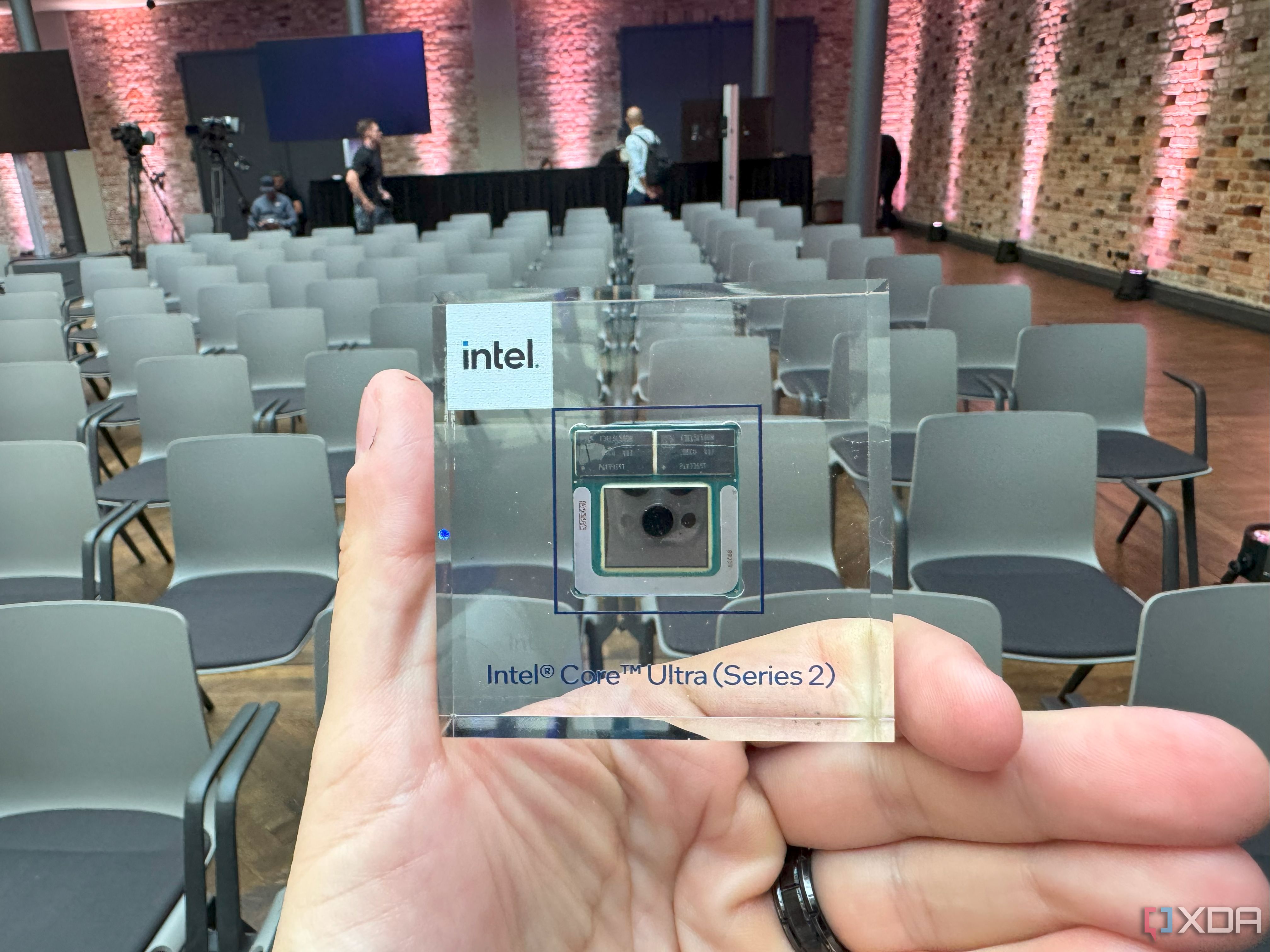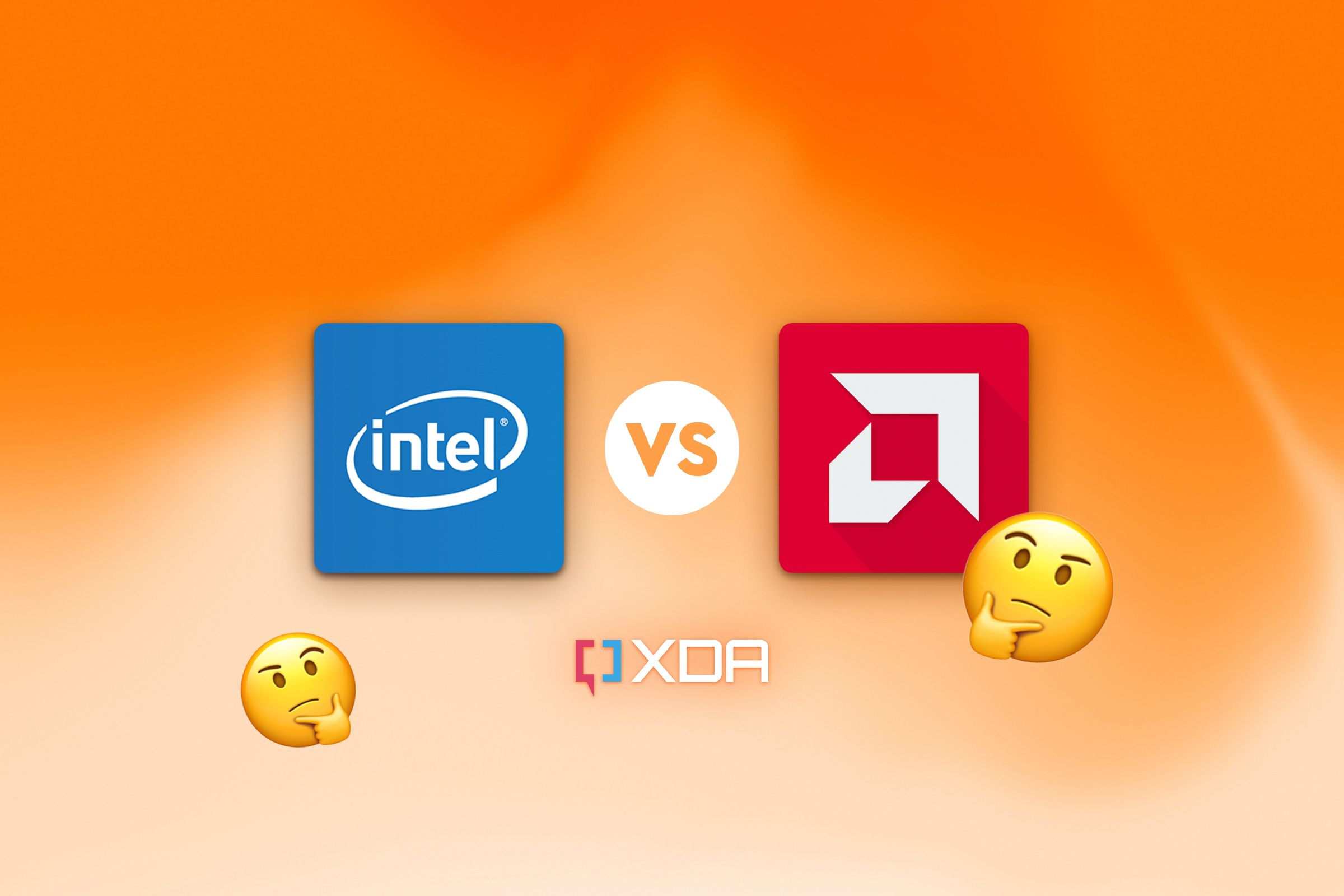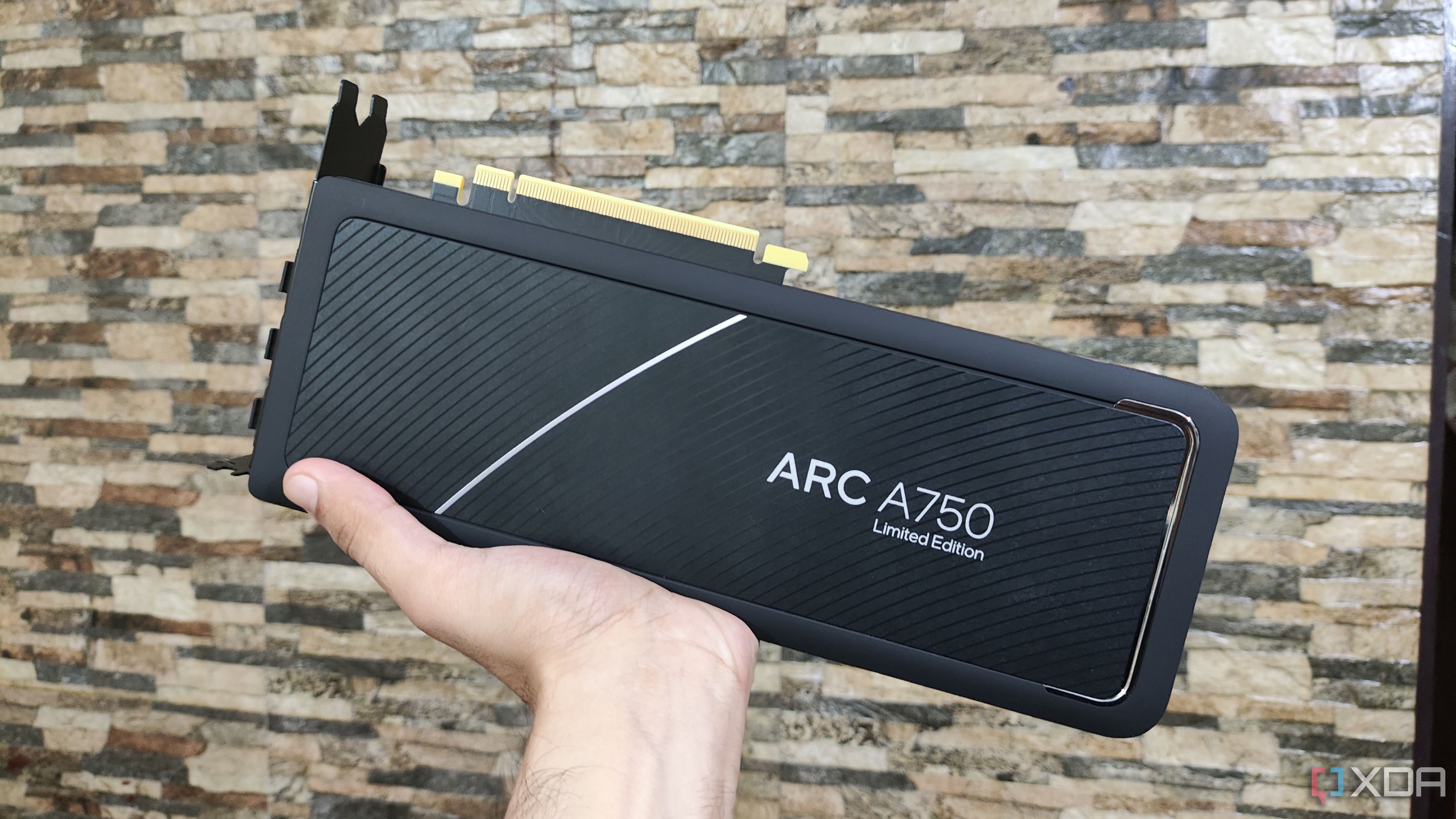You may have seen the news that Intel’s share of the GPU market has dropped to effectively zero, leaving Nvidia all but in charge, and AMD hanging on as distant runner-up. However, just because no one is buying Intel graphics cards today doesn’t mean they won’t in the future. While Intel GPU technology has been the butt of jokes for decades, it would be a mistake to count them out.
Related
Nvidia takes 88% of the GPU market share, crushing Intel’s grasp into nothingness
With AI hardware selling off the shelves, Nvidia has gotten so much of the market share that Intel has been bumped off the charts.
5
Intel can’t afford to stop developing GPU technology
It’s a key part of its future business
Source: Dell
Whether Intel keeps making and selling dedicated graphics cards or not, it has to pursue the development of GPU technology no matter what. Integrated graphics are more important than ever, and Intel faces stiff competition not only from AMD with their APUs, but also from companies like Qualcomm in Arm-based laptops. People who buy a modern ultrabook expect good mainstream graphics performance from these computers for tasks like video editing, light gaming, and professional applications like CAD. The GPU power of Apple Silicon devices is also a factor here, as Apple works on the software side to get developers onboard with their hardware.
Since Intel can’t get out of the GPU business completely, there should be plenty of time and resources to polish its technology and get its software ducks in a row. This would mean that dedicated versions of those GPU architectures could always debut at any time.
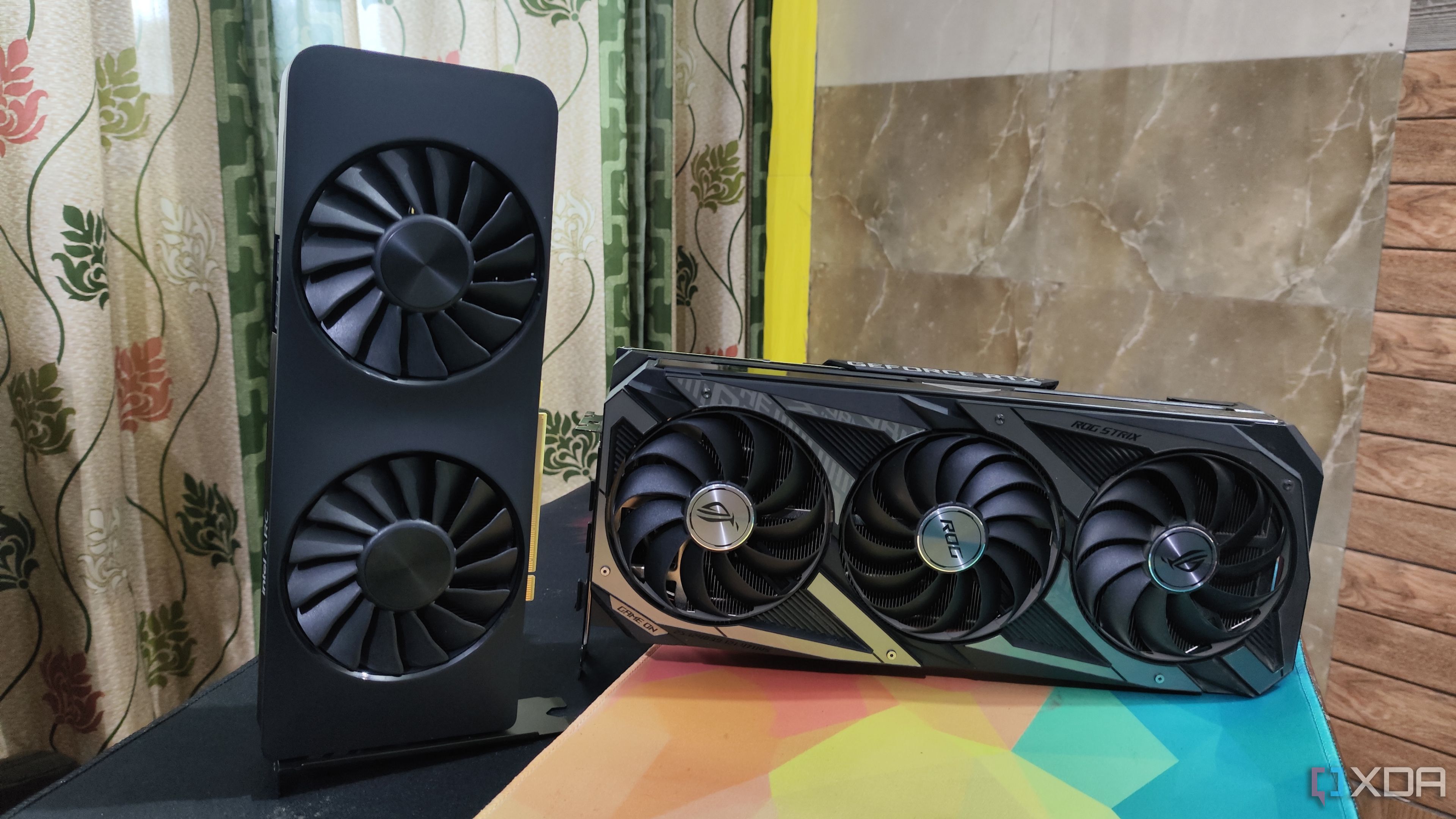
Related
3 reasons why I’m more excited about Intel Battlemage than Nvidia Blackwell
The RTX 5000 series will probably be unmatched on the performance front, but I’m more interested in Intel’s upcoming Battlemage GPUs
4
Intel clearly has graphics ambitions
Big Blue isn’t giving up on GPU tech yet
It might not even matter that Intel has little choice but stay in the GPU game, because I think the company has clearly signaled that it wants to be a serious player in the space. For one thing, based on a report from Reuters, Intel threw its hat in the ring to develop the hardware for the PlayStation 6, but lost the contract in 2022. Intel is also trying to compete with AMD in the fast-growing handheld gaming PC market, with the MSI Claw being the first example of a competing product to AMD’s Z1 Extreme APU.
Except for the desktop GPU market, everywhere else Intel has to compete, its graphics technology will matter when it comes to performance. Growing market share in these other sectors will doubtlessly benefit its desktop GPU products as well. That is, assuming it can make headway in any direction here.
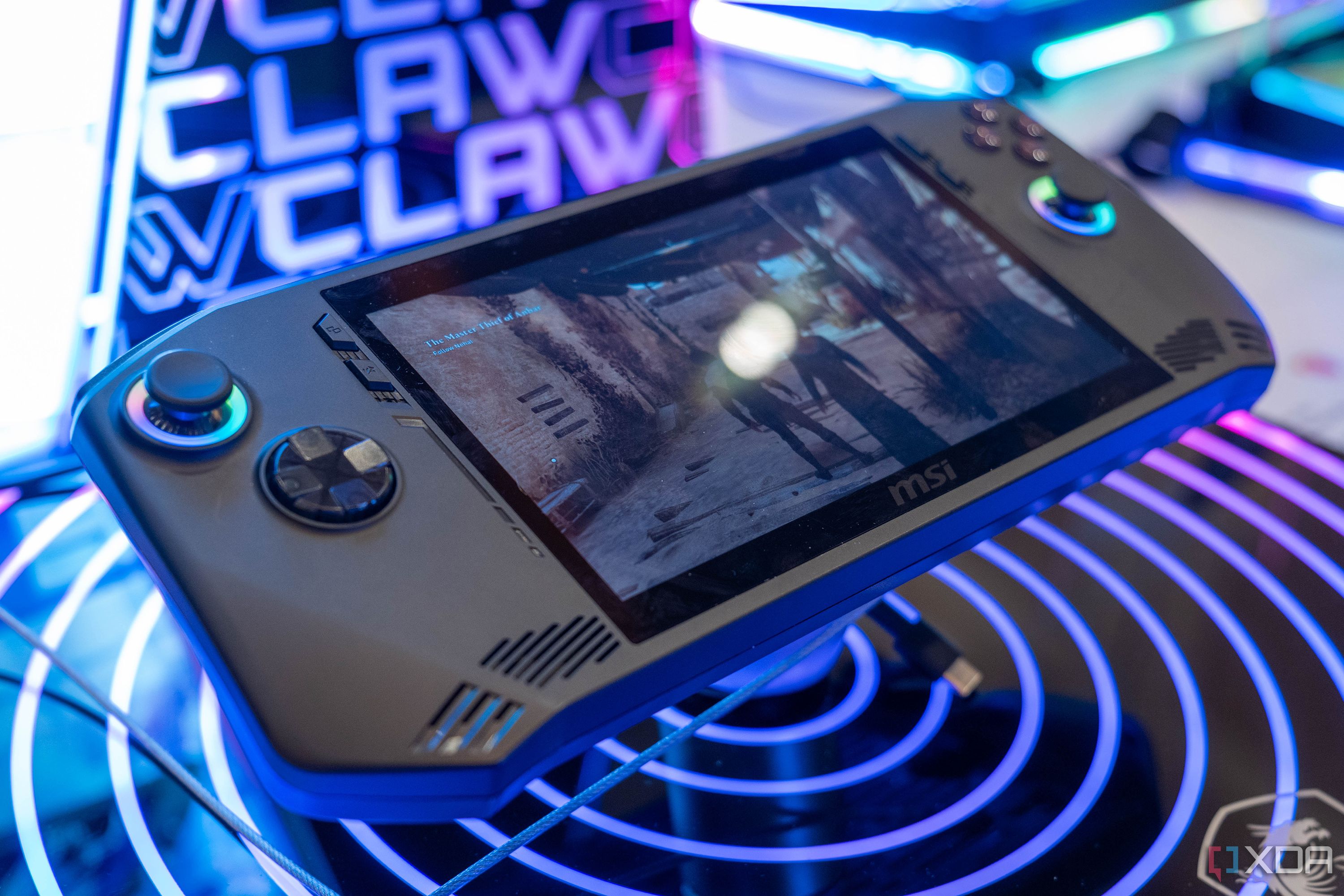
Related
4 reasons why the MSI Claw will (& won’t) become the best PC gaming handheld
The MSI Claw has the potential to be one of the best (or one of the worst) gaming handhelds on the market, and there are four reasons why.
3
Intel’s CPU business isn’t bulletproof
Hard times have hit the company
Intel has had quite a bad few years, and only recently have investors started feeling more confident about the chipmaker. Amid rumors of a Qualcomm takeover, potentially canceled desktop chips, and a Hail Mary mobile chip release, it’s obvious Intel isn’t infallible. The company has had its ups and downs, but I don’t think there’s ever been this much doubt about whether the ship might sink or not. Intel’s CEO has even suggested splitting the company in half to save it. With its core business in doubt, diversification might be one route to survival, and its GPU business is poised to be relevant.
2
AMD isn’t unbeatable
The race for second place is still on
If we see Intel’s graphics cards as being in competition with Nvidia, then the task seems insurmountable. If we frame it as a competition between Intel and AMD, on the other hand, then things are much different. Both are CPU and GPU makers, with the strengths of each in opposite areas. However, AMD has managed to make competitive CPUs compared to Intel, but Intel hasn’t yet met the challenge on the GPU side of the fence. It’s a much smaller hurdle to compete with AMD for its market share in the entry-level and mid-range market than with Nvidia’s dominant products and position. Intel knows it has a shot at AMD, if not Nvidia, and there’s no reason not to take it given their current respective positions.
1
GPUs are central to AI
Intel can’t leave dedicated GPUs behind if it wants to stay in AI
GPUs are a big business, and the technology applies to far more than consumer graphics on the desktop. Nvidia, in particular, has reached its astronomical valuation through AI applications, as generative AI and other related applications become important to modern computing. The massive parallel processing power of GPUs is also becoming paramount. As a processor maker, Intel can’t ignore AI, and you can’t leave GPUs out of the conversation when it comes to AI. So I expect dedicated GPUs will also remain part of the Intel product basket simply because they’ll have a place in AI applications, regardless of whether gamers or other mainstream users are currently interested in them.
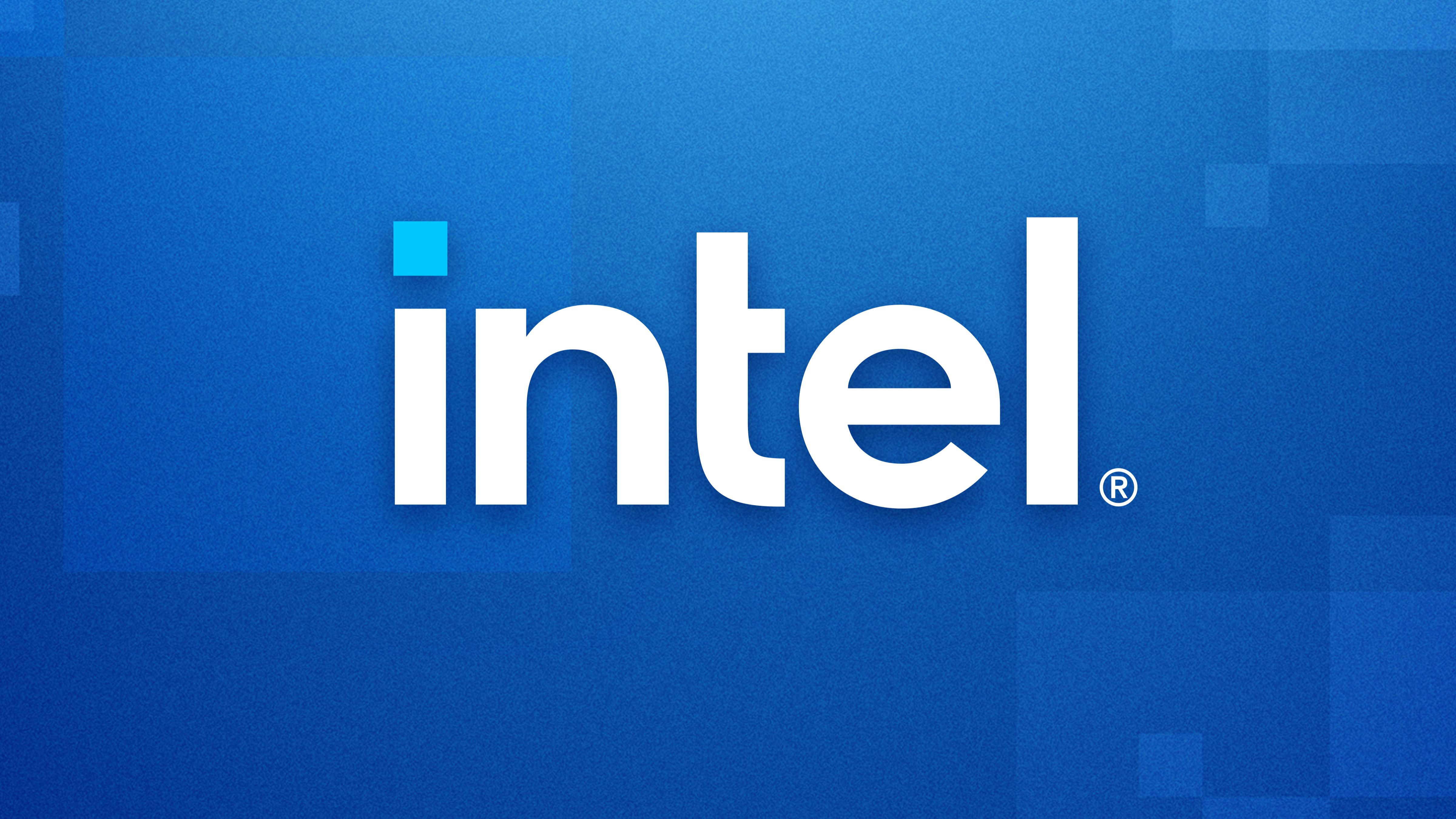
Related
Articul8 AI is a new generative AI company founded by Intel and DigitalBridge
Intel and DigitalBridge have launched their new generative AI company, Articul8 AI.
We’ll see Intel graphics cards again
I think it’s easy to underestimate how hard it is to enter an established market with a powerful player like Nvidia, and a strongly-motivated contender like AMD. Intel’s actual GPU hardware has been fantastic as a value option in the entry-level to mid-range market. The company’s cards have enough horsepower sold at a low enough price to make them compelling.
That is, until you look at how immature their offering has been so far. If Intel GPUs had launched with mature drivers and had flawless compatibility with older gaming titles as well as new ones, then I doubt we would have seen their market share slide into oblivion. It’s clear from the reaction of hardware reviewers and regular folks who buy GPUs that there’s a desire for a competent third player in the GPU market, and there’s no reason why Intel can’t eventually fulfill that need.



